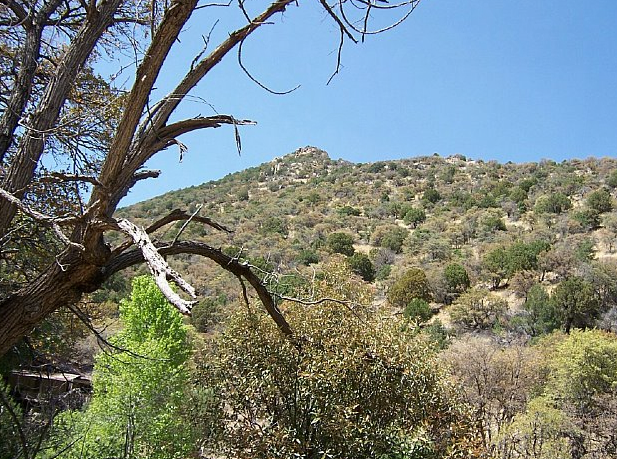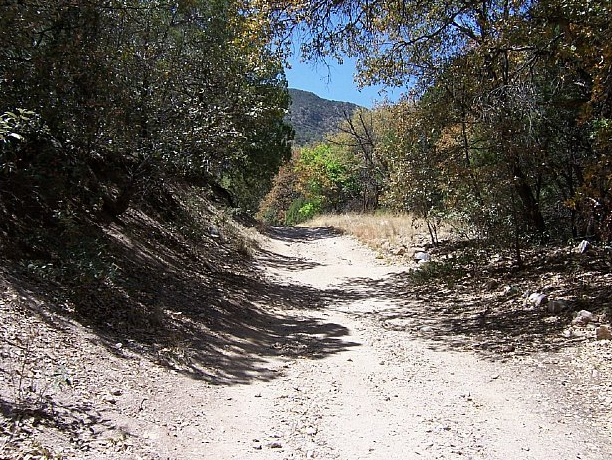Monday, April 30, 2007
Saturday, April 28, 2007
Christianity for the Rest of Us 3
Christianity for the Rest of Us: How the Neighborhood Church Is Transforming the Faith, by Diana Butler Bass.
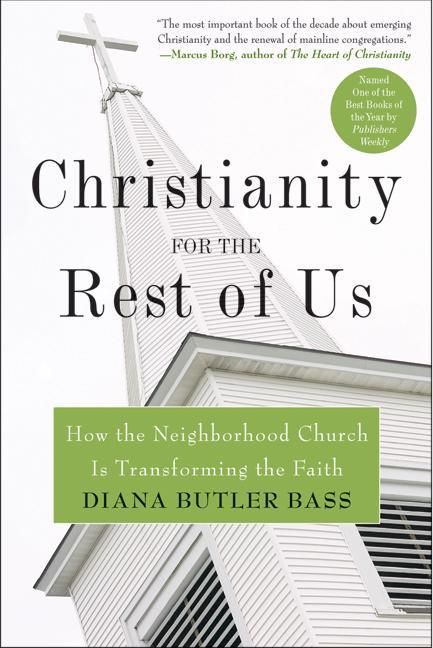
Christianity for the Rest of Us Blog 1
Christianity for the Rest of Us Blog 2
As I previously blogged, this subject is close to my heart and central to the needs of most of us in the protestant mainline; this book gives me so much hope! The RevGals' basic consensus was like mine—this book gives all of us hope! I love the RevGals' passion for unity in diversity, too. Just like mine!
A sudden memory inspired this third blog on this book...
Probably within the past ten years, but likely at the far end of that number, one of the national news magazines – Time, Newsweek or U.S. News – had an extensive cover feature on the American Protestant Mainline. It's been a while since I subscribed to any of those (mainline) mags, but I seem to recall purchasing a copy on the newsstand, so maybe I still have it somewhere. They featured the same denominations as Christianity for the Rest of Us, with the addition of Baptists – of which they said "there are many," but I believe most of the Baptist churches in the study were from the liberal American Baptist Convention-USA, headquartered in Valley Forge Pennsylvania. (You can find direct links to the other study denomination links in my Blog 1.) The news mag article(s) described local churches very similar to those DBB describes, and I remember the striking phrase, "Any of these churches is a wonderful place to be!"
Clearly I'm still in lots of pain over the too many times I'd been excluded from participation in churches over the past too many years, but I'm always saying things like, "I'm not claiming any of this remotely is my fault, because no matter how I parse it, people have been just plain rude and just plain considered me a threat." However, my segue to that and similar statements usually is something like, "A huge part of the answer is these have been the wrong kinds of churches." By that I'm not saying any of these mainline or whatever or whichever has been theologically erroneous or otherwise not appropriate, but the social and cultural settings haven't been where reasonably I could expect my abilities and background to be appreciated and exploited. It offends my still sometimes working-class sensibilities, but despite the fact there always would be exceptions, a church in the Harvard Square or UC Berkeley environs would have been very different with a radically differing outcome in terms of their welcoming (and yes, exploiting) my gifts and regular participation.
In my second blog I'd intended to mention how much I loved the concept of people and groups being politically neither Blue nor Red but Purple, and how I love the implications of early Christians adopting the royal color purple for radical, subversive usage and intent in seeking to follow The Way. In that era in that part of the world, only royals were allowed to wear purple; remember Lydia from Thyatira we read about in Acts 16? Lydia's story happens right after Timothy joins up with Paul and Silas and just before Paul and Silas end up in prison; the entire passage is magnificently evocative:
Here's the 1st Peter scripture from Blog 1:
By Leah, baptized into Jesus Christ and hoping to find a church that's a wonderful place to be.
###

Christianity for the Rest of Us Blog 1
Christianity for the Rest of Us Blog 2
As I previously blogged, this subject is close to my heart and central to the needs of most of us in the protestant mainline; this book gives me so much hope! The RevGals' basic consensus was like mine—this book gives all of us hope! I love the RevGals' passion for unity in diversity, too. Just like mine!
A sudden memory inspired this third blog on this book...
Probably within the past ten years, but likely at the far end of that number, one of the national news magazines – Time, Newsweek or U.S. News – had an extensive cover feature on the American Protestant Mainline. It's been a while since I subscribed to any of those (mainline) mags, but I seem to recall purchasing a copy on the newsstand, so maybe I still have it somewhere. They featured the same denominations as Christianity for the Rest of Us, with the addition of Baptists – of which they said "there are many," but I believe most of the Baptist churches in the study were from the liberal American Baptist Convention-USA, headquartered in Valley Forge Pennsylvania. (You can find direct links to the other study denomination links in my Blog 1.) The news mag article(s) described local churches very similar to those DBB describes, and I remember the striking phrase, "Any of these churches is a wonderful place to be!"
Clearly I'm still in lots of pain over the too many times I'd been excluded from participation in churches over the past too many years, but I'm always saying things like, "I'm not claiming any of this remotely is my fault, because no matter how I parse it, people have been just plain rude and just plain considered me a threat." However, my segue to that and similar statements usually is something like, "A huge part of the answer is these have been the wrong kinds of churches." By that I'm not saying any of these mainline or whatever or whichever has been theologically erroneous or otherwise not appropriate, but the social and cultural settings haven't been where reasonably I could expect my abilities and background to be appreciated and exploited. It offends my still sometimes working-class sensibilities, but despite the fact there always would be exceptions, a church in the Harvard Square or UC Berkeley environs would have been very different with a radically differing outcome in terms of their welcoming (and yes, exploiting) my gifts and regular participation.
In my second blog I'd intended to mention how much I loved the concept of people and groups being politically neither Blue nor Red but Purple, and how I love the implications of early Christians adopting the royal color purple for radical, subversive usage and intent in seeking to follow The Way. In that era in that part of the world, only royals were allowed to wear purple; remember Lydia from Thyatira we read about in Acts 16? Lydia's story happens right after Timothy joins up with Paul and Silas and just before Paul and Silas end up in prison; the entire passage is magnificently evocative:
Acts 16On the Sabbath, expecting to "find a place of prayer" at the river, they also found a place for baptism, where people formally could separate from former allegiances and lords, and officially be baptized into the reign of heaven on earth under the Lordship of the crucified and risen Jesus Christ—a Lord at once both royal and subversive! Lydia, the first European Christian was a woman, and one who "dealt in" clothing for kings but dared publicly sign onto the subversive lifestyle of the followers of Jesus Christ. In that era of the nascent church, Christianity provided a radically alternative perspective: politically to the point of sedition and socially to the extent of welcoming and actually including all comers. Lydia, newly-baptized and a merchant who routinely interacted with high and mighty royalty, knew God called her to hospitality and community.
13 On the Sabbath we went outside the city gate to the river, where we expected to find a place of prayer. We sat down and began to speak to the women who had gathered there. 14 One of those listening was a woman named Lydia, a dealer in purple cloth from the city of Thyatira, who was a worshiper of God. The Lord opened her heart to respond to Paul's message. 15 When she and the members of her household were baptized, she invited us to her home. "If you consider me a believer in the Lord," she said, "come and stay at my house." And she persuaded us. NIV
Here's the 1st Peter scripture from Blog 1:
1 Peter 2:9-10The end of another incomplete blog (what else is new), but here it is, nonetheless.
But you are a chosen, elect people (birthed, descended), a royal priesthood, a holy nation (ethnic), a people (folk) belonging to God, that you may declare the praises of him who called you out of darkness into his wonderful light. Once you were not a people (folk), but now you are the people (folk) of God; once you had not received mercy, but now you have received mercy.
By Leah, baptized into Jesus Christ and hoping to find a church that's a wonderful place to be.
tags, topics
1 Peter,
acts,
book discussion,
ecumenism,
epistle,
epistles,
hospitality,
sacraments,
water
Sunday, April 22, 2007
Earth Day 2007
For this year's Earth Day, here's the postage stamp series I designed last week. The images – all slices from my digitized analog graphics – aren't from my specifically bible-based or liturgical art; they're about our living green everywhere in faithful stewardship of creation. Interesting that we call Sundays in Ordinary Time "GREEN" Sundays!
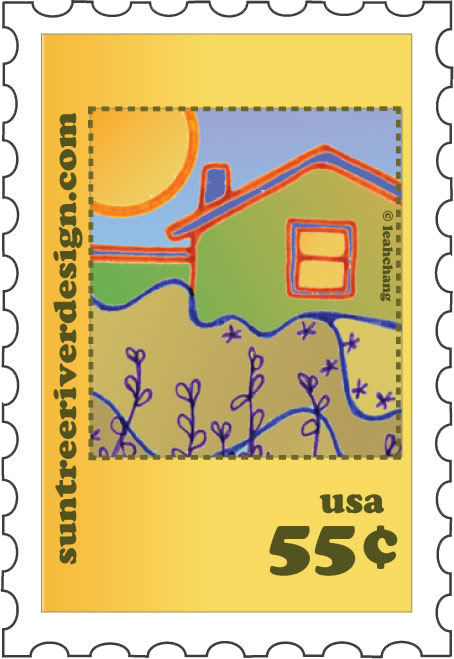



These are clickable images so you can look at full size versions, but on sun country living you can get a more direct fuller view.
For Earth Day 2005: John Prine's "Paradise" and "The End of the Innocence" by Don Henley.
From Earth Day 2006, a Eucharistic blog.




These are clickable images so you can look at full size versions, but on sun country living you can get a more direct fuller view.
For Earth Day 2005: John Prine's "Paradise" and "The End of the Innocence" by Don Henley.
From Earth Day 2006, a Eucharistic blog.
Saturday, April 21, 2007
Blacksburg Vigil Candle
I found this phenomenally beautiful stained glass candle image and accompanying post, Blacksburg Vigil Candle, on the main PC(USA) blog. The colors of the candle are the colors of the Virginia Tech Hokies.
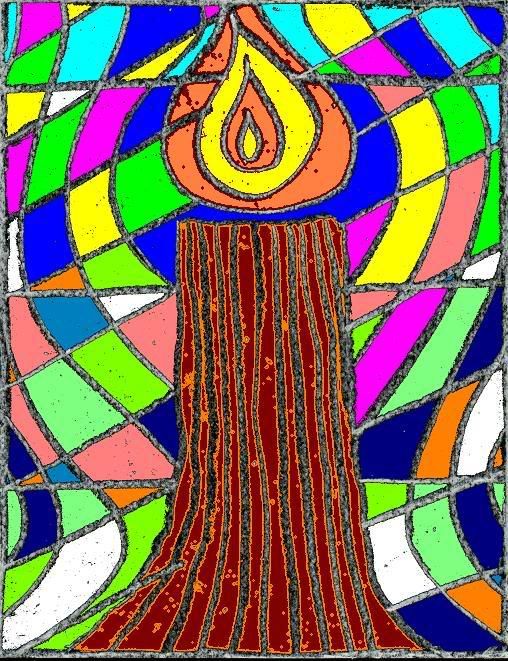

Christianity for the Rest of Us 2
Monday, 23 April, update: from a RevGalBookPals discussion!
Blog 1 went through chapter 11; today I'd planned to pick up on 12 through the end, but for this Saturday noon I'm actually blogging just a few more general thoughts.

Link to the book again: Christianity for the Rest of Us: How the Neighborhood Church Is Transforming the Faith, by Diana Butler Bass.
Previously I'd said this book gives me so much hope. Why? I blogged how Chapter five, "Finding Home," is about returnees, exiles, immigrants, converts and villagers, and how I love the emphasis on pilgrims on a pilgrimage. In many ways I can fit myself into all those categories, at least to some extent. Two quotes form the footer to my testimony blog, this far by faith; the first from the gospel hymn by that title:
Rowland Croucher of John Mark ministries quotes Kenneth Leach,
Reading through the earlier chapter, it struck me that these churches all did liturgy, devotion and service as they felt called and led, rather than necessarily in a way most typical of others in their denominations or, more broadly, traditions. However, you need to remember whatever "we" (the same as "us") do in the mainline is the Western Church's historical praxis, however its expression may be tweaked. It's those "others" who have changed worship, witness and political action to reflect something quite else.
Every so often I'll spend a little time on the websites of three churches in Cambridge, Massachusetts, imagining them as places and communities that would welcome me. A few months ago an acquaintance looked at some of my graphic design and said, "People should be exploiting you!" Exactly what I thought might be the case; exactly what I long to and for a while need to have happen. I know how greedy I am to learn about others and to learn from them, and it completely boggles my mind and mystifies me that so many people have considered me a threat rather than a gift.
That's all for today; after I read the RevGals' intro to the book and other reflections about it, I'll blog again next week.
Blog 1 went through chapter 11; today I'd planned to pick up on 12 through the end, but for this Saturday noon I'm actually blogging just a few more general thoughts.

Link to the book again: Christianity for the Rest of Us: How the Neighborhood Church Is Transforming the Faith, by Diana Butler Bass.
Previously I'd said this book gives me so much hope. Why? I blogged how Chapter five, "Finding Home," is about returnees, exiles, immigrants, converts and villagers, and how I love the emphasis on pilgrims on a pilgrimage. In many ways I can fit myself into all those categories, at least to some extent. Two quotes form the footer to my testimony blog, this far by faith; the first from the gospel hymn by that title:
We've come this far by faith, leaning on the Lord;Coupled with a quote from the poem "Cantares," by Antonio Machado:
trusting in God's holy Word, God's never failed us yet.
Oh, we can't turn back, we've come this far by faith.
We've come this far by faith.
Caminante, no hay camino; se hace camino al andar.This book gives me hope because it makes me realize there are churches, maybe local to my current street address, that would welcome me and let me participate as fully as I feel called to do without my needing to return to some form of authorized ministry. There are churches that recognize and support the uncertainties of the pilgrim way!
Traveler, there is no road; the way is made by walking.
Rowland Croucher of John Mark ministries quotes Kenneth Leach,
The essential difference between orthodox Christianity and the various heretical systems is that orthodoxy is rooted in paradox. ... true faith can only grow and mature if it includes the elements of paradox and creative doubt. Hence the insistence of orthodoxy that God cannot be known by the mind, but is known in the obscurity of faith...Exactly my position!
Reading through the earlier chapter, it struck me that these churches all did liturgy, devotion and service as they felt called and led, rather than necessarily in a way most typical of others in their denominations or, more broadly, traditions. However, you need to remember whatever "we" (the same as "us") do in the mainline is the Western Church's historical praxis, however its expression may be tweaked. It's those "others" who have changed worship, witness and political action to reflect something quite else.
Every so often I'll spend a little time on the websites of three churches in Cambridge, Massachusetts, imagining them as places and communities that would welcome me. A few months ago an acquaintance looked at some of my graphic design and said, "People should be exploiting you!" Exactly what I thought might be the case; exactly what I long to and for a while need to have happen. I know how greedy I am to learn about others and to learn from them, and it completely boggles my mind and mystifies me that so many people have considered me a threat rather than a gift.
That's all for today; after I read the RevGals' intro to the book and other reflections about it, I'll blog again next week.
Friday, April 20, 2007
Friday 5: Surprised by Joy!
Today is Friday, so it's time for the...
Friday 5: Surprised by Joy
Songbird cites: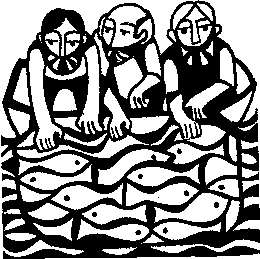
Weeping may linger for the night, but joy comes with the morning. (Psalm 30:5b)
Then Songbird observes:
To begin, I'll mention my extreme propensity – maybe gift – for always being able to extract the good, the positive and the hopeful out of any circumstance, situation and person. Sometimes it has slowed me down or kept me stuck, but for the most part, it has saved me; I especially love Songbird's saying, "[Joy] is the spirit of resurrection."
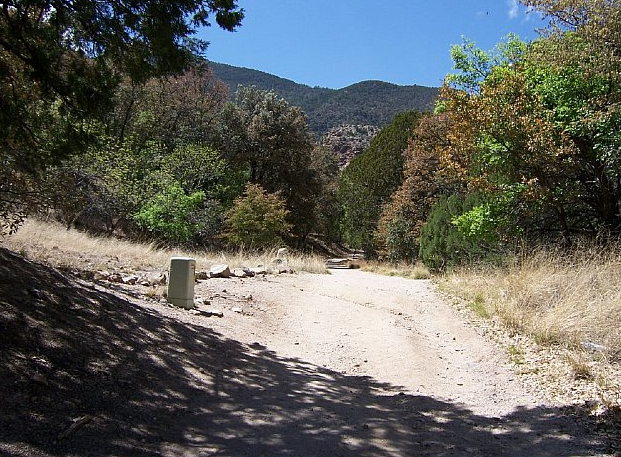

Friday 5: Surprised by Joy
Songbird cites:
Jesus said to them, "Children, you have no fish, have you?" They answered him, "No."
He said to them, "Cast the net to the right side of the boat, and you will find some." So they cast it, and now they were not able to haul it in because there were so many fish. That disciple whom Jesus loved said to Peter, "It is the Lord!" When Simon Peter heard that it was the Lord, he put on some clothes, for he was naked, and jumped into the sea. (John 21:5-7)

Weeping may linger for the night, but joy comes with the morning. (Psalm 30:5b)
Then Songbird observes:
This week I've been watching parents of the young people slain at Virgina Tech trying to make meaning out of the lives of their lost children, and each one seems to begin by focusing on something joyful about that child. It's a gift that most humans have brains wired to respond in that way. For some of us it can be harder to work our way out of dark places, but I believe joy remains the key. It is the spirit of resurrection.Tell us about five people, places, or things that have brought surprising, healing joy into your life.
To begin, I'll mention my extreme propensity – maybe gift – for always being able to extract the good, the positive and the hopeful out of any circumstance, situation and person. Sometimes it has slowed me down or kept me stuck, but for the most part, it has saved me; I especially love Songbird's saying, "[Joy] is the spirit of resurrection."
- Every time I suddenly remember the first verse of the previous chapter of John always joyfully surprises me again:
Early on the first day of the week, while it was still dark, Mary Magdalene went to the tomb and saw that the stone had been removed from the entrance. (John 20:1) - For a double play, the Eucharist and being in worship during a baptism.
- Savory, tasty food, particularly shared with friends and/or acquaintances and good conversation. Always revives and gives me hope like almost nothing else can!
- Cuddling with cats, or just watching them with their sense of style and their knowledge of who they are.
- Despite being an ultra urban geek, being outdoors in nature, whether by the ocean, mountains, desert, forest or wherever.


Thursday, April 19, 2007
Tuesday, April 17, 2007
Christianity for the Rest of Us 1
From RevGalBookPals.
Because the March date for the first discussion came so abruptly, I didn't participate (the book didn't interest me much, either); however, the next book will be Christianity for the Rest of Us: How the Neighborhood Church Is Transforming the Faith, by Diana Butler Bass. This subject is close to my heart and central to the needs of most of us in the protestant mainline, so this time I'm reading, thinking and blogging. This book gives me so much hope!
Each RevGals book discussion formally will begin on the fourth Monday of every month, with an option to post a little in the comments section or link directly to a longer blog post about the book. I am delighted to get blog fodder, and in my characteristic style, I'll do several actual blogs. So far I've read about half of Christianity for the Rest of Us, highlighting and making comments as I went along, but for this introductory blog, I'm writing from memory and plan to blog specifics later.
You can go to the author's site or the Amazon page to find out more, but basically the study included ten core study churches plus forty correlated validation churches. Spread across the continental United States, all were what used to be generically referred to as mainline protestant, though these days that old once predictably socially, theologically and politically mainline has become sideline or spurline: United Methodist; Evangelical Lutheran Church In America; United Church of Christ, Presbyterian Church (USA); Episcopal Church, and Disciples of Christ. The project combined participant observation, personal reflections from the book's author, from congregation leaders (both pastoral and lay) and from rank and file members with relatively hard data collection and crunching. The Practicing Congregations site didn't work any of the times I tried it, but maybe it'll be live later on.
 The prose is easygoing, flowing, readable, and non-annoying, which I very much appreciate. But to get it out of the way, I'll start with a single complaint—so far my only reservation! Several of the study congregations are in the United Church of Christ, a denomination half a century old this year; many UCC churches originally were Congregational in name and in polity, but many weren't. Typically, a UCC church gathered prior to 1957 retains its former affiliation, like "Congregational" or "Evangelical and Reformed" in its name, and when I lived in New England, UCC folks sometimes would call themselves "Congregationalists," but that isn't even the polity any more! DBB incorrectly refers to study participants as congregationalists rather than correctly as UCC-ers. 'Nuff said...
The prose is easygoing, flowing, readable, and non-annoying, which I very much appreciate. But to get it out of the way, I'll start with a single complaint—so far my only reservation! Several of the study congregations are in the United Church of Christ, a denomination half a century old this year; many UCC churches originally were Congregational in name and in polity, but many weren't. Typically, a UCC church gathered prior to 1957 retains its former affiliation, like "Congregational" or "Evangelical and Reformed" in its name, and when I lived in New England, UCC folks sometimes would call themselves "Congregationalists," but that isn't even the polity any more! DBB incorrectly refers to study participants as congregationalists rather than correctly as UCC-ers. 'Nuff said...
As I read about amazing, hospitable, creative and faithful churches in this book I had trouble putting down (though finally I did, in order to go to bed and hopefully to sleep), I kept asking myself why I hadn't found, or serendipitously happened upon anything remotely like them! There are such places where a person truly can belong, can grow, change and be transformed in every aspect of being in Jesus Christ.
The "Rest of Us" means protestant (but definitely could include many Roman Catholics, too) Christians who don't affiliate or consider themselves fundamentalist or evangelical in the recently popular sense of evangelical; the book jacket features a black and white sketch of a high-steepled, white wood frame church that's probably not the big downtown First or Central Church, but the drawing is similar to enough small town, suburban and small city meetinghouses that a lot of readers probably can identify. In my blog a couple months ago about the new Evangelical Lutheran Worship book I called the ELW's cover "Reformation Red" and got corrected in the comments that the color officially is "Cranberry!!" In the dust jacket of Christianity for the Rest of Us the subtitle and author's name are encased in a red dye strike rectangle, but I won't venture the name of the color...
Over the past decade there's been a lot about the resurgence of spirituality, with countless people telling the rest of us(!), "I'm not religious, but I'm spiritual." DBB distinguishes between ecstasy, which she calls "spiritual" and religion, or "order," a distinction I'd never considered!
From the Introduction:
Chapter One is about "The Vanished Village," that seemingly self-contained community where everyone knew everyone else, together with most of their comings and goings; the village space that held and held together an individual's and a family's entire life of workplace, school, house of worship, residence, markets, and other services, so no one ever needed to go physically outside the perimeter. As the author points out, in this U.S.A. that kind of village went away just a few decades ago, within most of our lifetimes. Among everything else, the village was a uniculture, too—homogeneous in most aspects. Chapter Five, "Finding Home," is about returnees, exiles, immigrants, converts and villagers. I love the emphasis on pilgrims on a pilgrimage that threads throughout what I've read thus far. And the clarifying observation on page 86, "...as a pilgrim of Christ, you will sometimes be the host and sometimes the guest." This book gives me so much hope—but I already said it did!
Goleta, California, Presbyterian Church! As DBB observes on page 144, "Despite its small-town agrarian roots, [the city of] Goleta is now pure California; it is ethnically, socially and culturally diverse—and completely post-Christian." She quotes Pastor Steve Jacobsen: "For centuries congregations were formed around ethnic identities..."
Seem as if everyone knows that, and a few decades away from the Vanished Village (at least for most of us in the continental United States), as a country we now are not only a geographically diverse landscape; as a political people, we have become ethnically, linguistically, racially and culturally diverse beyond anyone's anticipation, many of us claiming more than one of each category. I love this relatively late passage from 2 Peter, where the epistle's author uses three different Greek words with three different implications for the English word people:
1 Peter 2:9-10
But you are a chosen, elect people (birthed, descended), a royal priesthood, a holy nation (ethnic), a people (folk) belonging to God, that you may declare the praises of him who called you out of darkness into his wonderful light. Once you were not a people (folk), but now you are the people (folk) of God; once you had not received mercy, but now you have received mercy.
We know the Galatian Church identified as the first of what these days we'd call an distinctively ethnic congregation, one gathered on the basis of genetic and cultural inheritance. Something to think and blog about?! I hope to finish reading and blog at least one more time before the official RevGals discussion begins next Monday; I also expect I'll get lots of ideas from other bloggers.
Because the March date for the first discussion came so abruptly, I didn't participate (the book didn't interest me much, either); however, the next book will be Christianity for the Rest of Us: How the Neighborhood Church Is Transforming the Faith, by Diana Butler Bass. This subject is close to my heart and central to the needs of most of us in the protestant mainline, so this time I'm reading, thinking and blogging. This book gives me so much hope!
Each RevGals book discussion formally will begin on the fourth Monday of every month, with an option to post a little in the comments section or link directly to a longer blog post about the book. I am delighted to get blog fodder, and in my characteristic style, I'll do several actual blogs. So far I've read about half of Christianity for the Rest of Us, highlighting and making comments as I went along, but for this introductory blog, I'm writing from memory and plan to blog specifics later.
You can go to the author's site or the Amazon page to find out more, but basically the study included ten core study churches plus forty correlated validation churches. Spread across the continental United States, all were what used to be generically referred to as mainline protestant, though these days that old once predictably socially, theologically and politically mainline has become sideline or spurline: United Methodist; Evangelical Lutheran Church In America; United Church of Christ, Presbyterian Church (USA); Episcopal Church, and Disciples of Christ. The project combined participant observation, personal reflections from the book's author, from congregation leaders (both pastoral and lay) and from rank and file members with relatively hard data collection and crunching. The Practicing Congregations site didn't work any of the times I tried it, but maybe it'll be live later on.
 The prose is easygoing, flowing, readable, and non-annoying, which I very much appreciate. But to get it out of the way, I'll start with a single complaint—so far my only reservation! Several of the study congregations are in the United Church of Christ, a denomination half a century old this year; many UCC churches originally were Congregational in name and in polity, but many weren't. Typically, a UCC church gathered prior to 1957 retains its former affiliation, like "Congregational" or "Evangelical and Reformed" in its name, and when I lived in New England, UCC folks sometimes would call themselves "Congregationalists," but that isn't even the polity any more! DBB incorrectly refers to study participants as congregationalists rather than correctly as UCC-ers. 'Nuff said...
The prose is easygoing, flowing, readable, and non-annoying, which I very much appreciate. But to get it out of the way, I'll start with a single complaint—so far my only reservation! Several of the study congregations are in the United Church of Christ, a denomination half a century old this year; many UCC churches originally were Congregational in name and in polity, but many weren't. Typically, a UCC church gathered prior to 1957 retains its former affiliation, like "Congregational" or "Evangelical and Reformed" in its name, and when I lived in New England, UCC folks sometimes would call themselves "Congregationalists," but that isn't even the polity any more! DBB incorrectly refers to study participants as congregationalists rather than correctly as UCC-ers. 'Nuff said...As I read about amazing, hospitable, creative and faithful churches in this book I had trouble putting down (though finally I did, in order to go to bed and hopefully to sleep), I kept asking myself why I hadn't found, or serendipitously happened upon anything remotely like them! There are such places where a person truly can belong, can grow, change and be transformed in every aspect of being in Jesus Christ.
The "Rest of Us" means protestant (but definitely could include many Roman Catholics, too) Christians who don't affiliate or consider themselves fundamentalist or evangelical in the recently popular sense of evangelical; the book jacket features a black and white sketch of a high-steepled, white wood frame church that's probably not the big downtown First or Central Church, but the drawing is similar to enough small town, suburban and small city meetinghouses that a lot of readers probably can identify. In my blog a couple months ago about the new Evangelical Lutheran Worship book I called the ELW's cover "Reformation Red" and got corrected in the comments that the color officially is "Cranberry!!" In the dust jacket of Christianity for the Rest of Us the subtitle and author's name are encased in a red dye strike rectangle, but I won't venture the name of the color...
Over the past decade there's been a lot about the resurgence of spirituality, with countless people telling the rest of us(!), "I'm not religious, but I'm spiritual." DBB distinguishes between ecstasy, which she calls "spiritual" and religion, or "order," a distinction I'd never considered!
From the Introduction:
...[in the study] were solid, healthy churches that exhibited Christian authenticity, expressed a coherent faith, and offered members ways of living with passion and purpose. They exuded a renewed sense of mission and identity, often having emerged from dire circumstances...they were their own best selves—creative and traditional, risktaking and grounded, confidence and humble, open and orthodox. They were often in tension with local fundamentalist Christians or, surprisingly, their own denominations. And sometimes both.Disclaimer, again: I'm in the puter lab without the book but I do have a few notes. Despite my including a few page numbers, when you check your copy of the book I may have them wrong, so please don't fret.
Chapter One is about "The Vanished Village," that seemingly self-contained community where everyone knew everyone else, together with most of their comings and goings; the village space that held and held together an individual's and a family's entire life of workplace, school, house of worship, residence, markets, and other services, so no one ever needed to go physically outside the perimeter. As the author points out, in this U.S.A. that kind of village went away just a few decades ago, within most of our lifetimes. Among everything else, the village was a uniculture, too—homogeneous in most aspects. Chapter Five, "Finding Home," is about returnees, exiles, immigrants, converts and villagers. I love the emphasis on pilgrims on a pilgrimage that threads throughout what I've read thus far. And the clarifying observation on page 86, "...as a pilgrim of Christ, you will sometimes be the host and sometimes the guest." This book gives me so much hope—but I already said it did!
Goleta, California, Presbyterian Church! As DBB observes on page 144, "Despite its small-town agrarian roots, [the city of] Goleta is now pure California; it is ethnically, socially and culturally diverse—and completely post-Christian." She quotes Pastor Steve Jacobsen: "For centuries congregations were formed around ethnic identities..."
Seem as if everyone knows that, and a few decades away from the Vanished Village (at least for most of us in the continental United States), as a country we now are not only a geographically diverse landscape; as a political people, we have become ethnically, linguistically, racially and culturally diverse beyond anyone's anticipation, many of us claiming more than one of each category. I love this relatively late passage from 2 Peter, where the epistle's author uses three different Greek words with three different implications for the English word people:
1 Peter 2:9-10
But you are a chosen, elect people (birthed, descended), a royal priesthood, a holy nation (ethnic), a people (folk) belonging to God, that you may declare the praises of him who called you out of darkness into his wonderful light. Once you were not a people (folk), but now you are the people (folk) of God; once you had not received mercy, but now you have received mercy.
We know the Galatian Church identified as the first of what these days we'd call an distinctively ethnic congregation, one gathered on the basis of genetic and cultural inheritance. Something to think and blog about?! I hope to finish reading and blog at least one more time before the official RevGals discussion begins next Monday; I also expect I'll get lots of ideas from other bloggers.
Tuesday, April 10, 2007
Ramsey Canyon Preserve
 Late this morning we drove south toward growing, increasingly dynamic Sierra Vista to The Nature Conservancy's amazing Ramsey Canyon Preserve.
Late this morning we drove south toward growing, increasingly dynamic Sierra Vista to The Nature Conservancy's amazing Ramsey Canyon Preserve. Some notes from the site:
"Ramsey Canyon, located within the Upper San Pedro River Basin in southeastern Arizona, is renowned for its outstanding scenic beauty and the diversity of its plant and animal life. This diversity―including such highlights as 15 species of hummingbirds―is the result of a unique interplay of geology, biogeography, topography, and climate.
"Southeastern Arizona is an ecological crossroads, where the Sierra Madre of Mexico, the Rocky Mountains, and the Sonoran and Chihuahuan deserts all come together. The abrupt rise of mountains like the Huachucas from the surrounding arid grasslands creates "sky islands" harboring rare species and communities of plants and animals. This combination of factors gives Ramsey Canyon Preserve its tremendous variety of plant and animal life, including such southwestern specialties as the lemon lily, ridge-nosed rattlesnake, lesser long-nosed bat, elegant trogon, and berylline and white-eared hummingbirds.
"A spring-fed stream, northeast orientation, and high canyon walls provide Ramsey Canyon with a moist, cool environment unusual in the desert Southwest. Water-loving plants such as sycamores, maples, and columbines line the banks of Ramsey Creek, often growing within a few feet of cacti, yucca, and agaves. Communities ranging from semi-desert grassland to pine-fir forest are found within the vicinity of Ramsey Canyon Preserve.
"Ramsey Canyon and the Upper San Pedro River Basin are situated within the Apache Highlands ecoregion, which encompasses central and southeastern Arizona, southwest New Mexico, and the northern Sierra Madre of Mexico. These programs are part of a science-based ecoregional approach to conservation in which the Conservancy works across broad landscapes with many private and public partners, sharing resources and knowledge to expedite the protection of species and habitats throughout the state.
"Together, The Nature Conservancy works with partners to achieve much greater success than any one entity working independently. Multiple partners also ensure a broader perspective and more enduring conservation solutions."
As contrasted with (here's my Southern Arizona Travelogue) two years ago, this time we got some updated trail guides―adult's and kid's versions. I'd like to quote some from both, but that'll have to wait until I have a little time to sift through and select some of the most interesting stuff.

At Boundless Gallery I bought this glorious bird card by Lisa K. Walraven; the self-titled site listed on the back of the card wasn't live when I tried.
Returning to Tucson through Sierra Vista, we stopped for late lunch at a McDonald's characteristically decorated with southwestern desert textiles and metalwork.
Sunday, April 08, 2007
Risen Christ!
Christ Is Risen!
Christ Is Risen!!
Christ Is Risen!!!
He Is Risen!!!!
He Is Risen Indeed!!!!!
Christ Is Risen!!
Christ Is Risen!!!
He Is Risen!!!!
He Is Risen Indeed!!!!!
Subscribe to:
Posts (Atom)

